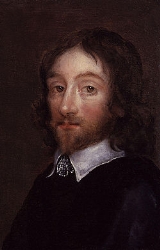
author of varied works which reveal his wide learning in diverse fields including medicine
, religion
, science
and the esoteric.
Browne's writings display a deep curiosity towards the natural world, influenced by the scientific revolution of Baconian
enquiry, while his Christian
faith exuded tolerance and goodwill towards humanity in an often intolerant era. A consummate literary craftsman, Browne's works are permeated by frequent reference to Classical
and Biblical
sources and to his own highly idiosyncratic personality.
Many from the ignorance of these Maxims, and an inconsiderate zeal unto Truth, have too rashly charged the troops of error, and remain as Trophies unto the enemies of Truth: A man may be in as just possession of Truth as of a City, and yet be forced to surrender.![]()
I love to lose myself in a mystery, to pursue my reason to an O altitudo.![]()
I have often admired the mystical way of Pythagoras, and the secret Magic of numbers.![]()
The severe Schools shall never laugh me out of the Philosophy of Hermes, that this visible world is but a picture of the invisible.![]()
Rich with the spoils of nature.![]()
We carry with us the wonders, we seek without us: There is all Africa, and her prodigies in us; we are that bold and adventurous piece of nature, which he that studies, wisely learns in a compendium, what others labour at in a divided piece and endless volume.![]()
All things are artificial, for nature is the Art of God.![]()
Obstinacy in a bad cause, is but constancy in a good.![]()
Persecution is a bad and indirect way to plant Religion.![]()
Thus is man that great and true Amphibium, whose nature is disposed to live not only like other creatures in divers elements, but in divided and distinguished worlds.![]()

